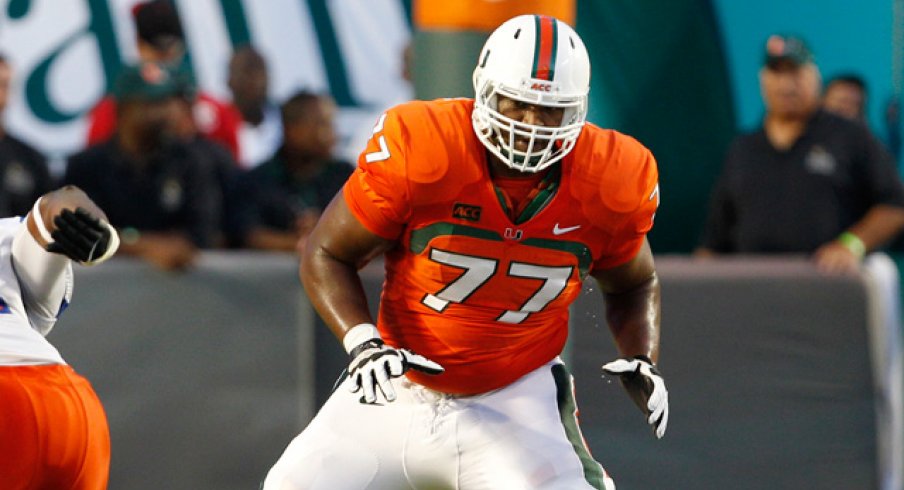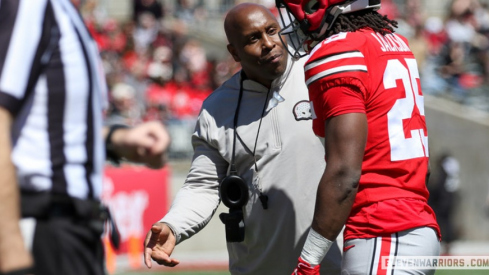College football recruiting has become big business. Schools are spending hundreds of thousands of dollars to crisscross the country and host highly touted players on official visits. It’s all done in the name of staying relevant in an increasingly competitive sport. The meal tickets are four- and five-star recruits.
But just how often do those blue-chip prospects become NFL stars? Well, not nearly as frequently as one might think. What’s even more likely is a two-star recruit becoming a household name. All-American lists are often dotted with four- and five-star can’t-miss-prospects. Not so for All-Pros and your favorite NFL players.
On a Sunday night in February, Russell Wilson completed 72 percent of his passes for 206 yards and two touchdowns in leading the Seahawks to a resounding 43-8 win over Denver in the Super Bowl. Seven years earlier, Wilson used the month of February to ponder his college decision – N.C. State or Duke? Those were the two-star recruit’s options, as rated by Rivals and Scout.
“I put zero stock in star ratings,” Northwestern head coach Pat Fitzgerald said in the spring. “I have no idea what that means, nor do I care. I couldn’t care less. I believe in people.”
It’s a philosophy shared by many coaches and harkens back to Woody Hayes’ age-old advice: you win with people. Talented players are coveted by all, but there’s still a need for having players fit a program and culture. That doesn’t mean coaches won’t gravitate toward the recruits with three, four and five stars next to their name.
Wilson transferred to Wisconsin for his senior season, where he solidified his ability to deliver passes in tight windows, have a team gravitate toward his leadership and manage a game with precision. Perhaps Wisconsin was the right stop for Wilson, not solely because of the Big Ten championship he engineered, but due to the Badgers’ penchant for turning unassuming recruits into All-Big Ten, All-American and NFL players.
Wisconsin’s offense last season didn’t even average two-stars coming out of high school. The quarterback was a former walk-on and wide receiver Jared Abbrederis and half the offensive line were no-stars. For Wisconsin, it all added up to nine wins.
Two- and three-star recruits make up more than 85 percent of signees, according to Rivals.com, which presents a foolproof picture. If thousands of two- and three-players infiltrate college football, large quantities should also advance to the professional ranks.
Ohio State, with its brand and star-power coaches, loads up on four- and five-star recruits every year with a few three-stars scattered about. But there have been cases of low-level recruits panning out. Scout rated Brian Robiskie as a two-star in 2005 and A.J. Hawk was a three-star linebacker in the 2002 class that included five-star linebacker Mike D’Andrea. Unheralded quarterback Troy Smith and lightly-regarded wide receiver Santonio Holmes were in the same class. D’Andrea and a potential quarterback savior, Justin Zwick, were the most disappointing of the bunch.
Major programs have one eye on the others with offers coming in a flurry when an Ohio State, Alabama or Florida State makes a move.
| Year | 5-star | 4-star | 3-star | ≤ 2-star | Total |
|---|---|---|---|---|---|
| 2007 | 36 | 340 | 911 | 1,460 | 2,747 |
| 2008 | 37 | 357 | 866 | 1,368 | 2,628 |
| 2009 | 35 | 390 | 1,054 | 1,342 | 2,821 |
| 2010 | 26 | 389 | 1,316 | 1,071 | 2,802 |
| 2011 | 26 | 299 | 1,324 | 2,064 | 3,713 |
| TOTAL | 160 | 1,775 | 5,471 | 7,305 | 14,711 |
| % TOTAL | 1.1 | 12.1 | 37.2 | 49.7 | 100 |
| Source: Dr. Saturday | |||||
“That’s huge. There’s a list of schools that you, over time, learn to respect their opinion and evaluation,” Ohio State director of player personnel Mark Pantoni said. “If they offer a kid, we’re almost guaranteed to do it, too.”
Pantoni said it’s a sign of respect when a player Ohio State recently offered picks up several more inquiries. It shows the Buckeyes’ evaluation skills are above average. Not that it guarantees national titles. In the Seattle-Denver Super Bowl, nearly half of the teams’ 53-man rosters was filled with two-stars or below.
“I respect what [recruiting analysts] do. I truly do,” Wisconsin head coach Gary Andersen said. “But as coaches, we can’t put stock in that. We have to evaluate them our way. They’ll evaluate them their way. And, again, the uniqueness and the fit for each university is so important. You can't build your football team on what other people are saying.”
The process of recruiting and its famed star-rating system is the definition of an inexact science. J.C. Shurburtt, national recruiting analyst for 247Sports, said the task of ranking players isn’t always difficult – the explanation to players themselves, parents, coaches, etc. is the hard part.
“Those three groups of people only care about where their players are ranked,” Shurburtt said. “They ignore that a three-star or two-star rating isn’t bad, but interpret it as such.”
Northwestern is traditionally one of the “worst” recruiting schools in the Big Ten. Being a private institution that lacks the cachet of Ohio State, Michigan and Penn State has its disadvantages. Still, the shores of Lake Michigan and Chicago can be enticing. Fitzgerald has led the Wildcats to five bowl games while ranking near the bottom of February’s rankings year in and year out.
The most difficult aspect in slotting kids is hypothesizing how they might perform in college. Sometimes they could go to a coaching staff that doesn’t fit or doesn’t develop them. As teenagers, bodies can betray them.
During Brady Hoke’s tenure, Michigan’s upped their recruiting efforts after three downtrodden years under Rich Rodriguez. Impact freshmen have been in short supply, but attrition and underwhelming upperclassmen can still be attributed to Rodriguez. Hoke’s haul can’t be adequately judged until the coming years.
Wisconsin’s had two head coaches and subpar recruiting classes, according to the rankings, in the past five seasons, but still own three Big Ten titles and more wins than Michigan. It’s not a model many coaches would want to duplicate, though.
“It’s not by accident that the schools that usually recruit well, play well,” Urban Meyer said. “There are some guys out there that know what they’re doing in recruiting services, so I will take a peek at that. But that’s not how you make decisions. A five-star recruit usually has a better career than other ones. There are always great examples of a young late-developer. But those recruiting analysts aren’t bad. They do a good job.”
At Ohio State, Pantoni and his trusted staff of assistants have broken down 2,700 full games for the classes of 2014, ’15 and ’16. There’s a lenient philosophy on offering kids, with Meyer giving coaches partial autonomy on which prospects to target.
“He wants the area coaches to have authority in their area, so if they really like a kid sand feel strongly about then, he doesn’t have any hesitation for them to offer,” Pantoni said. “Sometimes I have to be the neutral party. [Meyer’s] learned to trust me over time. Instead of just agreeing with everyone all the time, it’s good to have an outside opinion.”
Occasionally, that outside opinion can be recruiting ratings, and they sometimes ring true.


